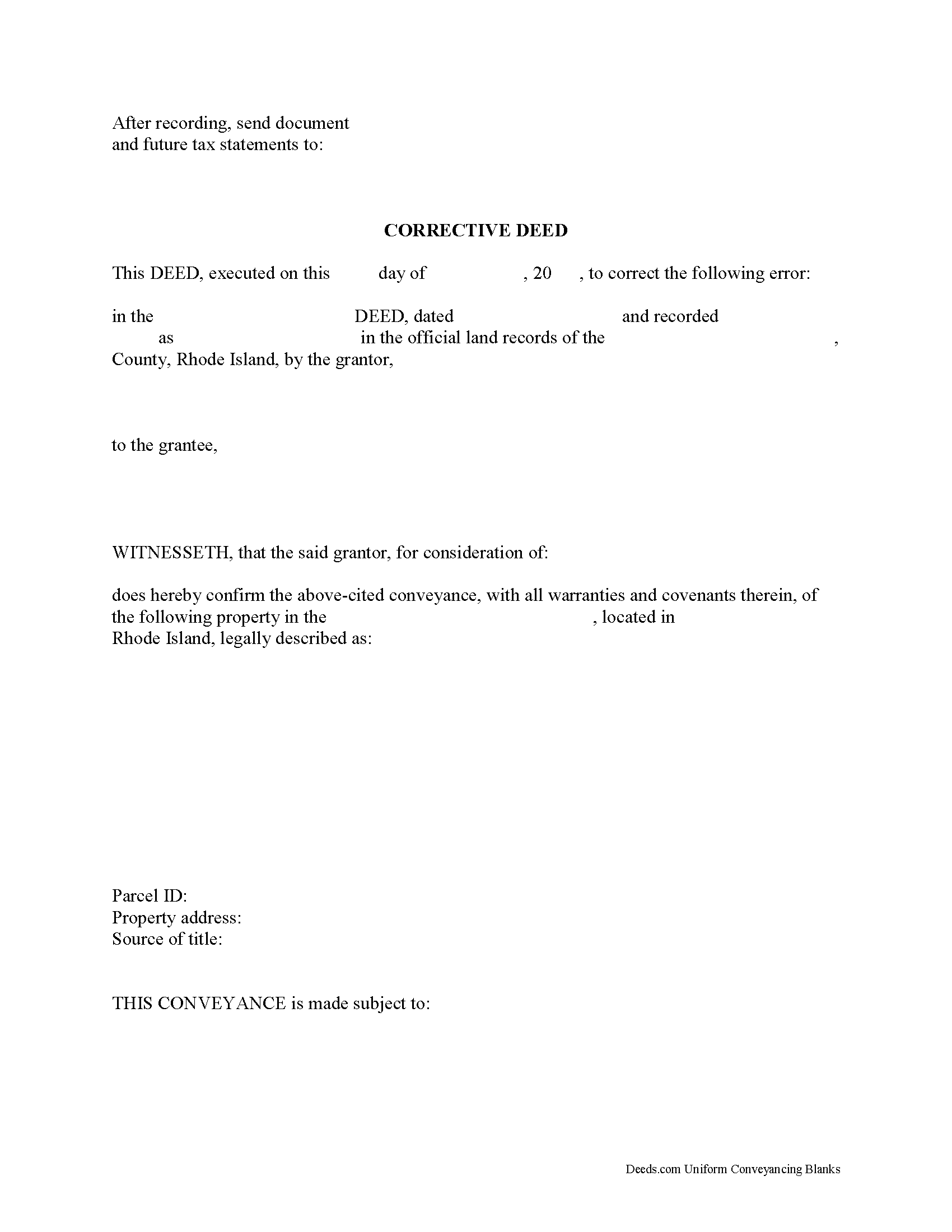Rhode Island Correction Deed
County Forms
Where is the property located?
Bristol CountyKent CountyNewport CountyProvidence CountyWashington CountyCorrection Deed for Real Estate Located in Rhode Island

Use the corrective deed to correct an error in a previously recorded deed of conveyance in Rhode Island.
Correcting an error in a recorded deed helps prevent problems that might arise when the current owner tries to sell the property. The best method for correction is to prepare and record a new document, a so-called corrective deed. This document does not convey title; instead, it confirms the prior conveyance of the property.
Apart from supplying the correct information, the new deed must state the reason for correcting, and it must reference the prior deed by title, date, and recording number. The original grantor must sign again, thus confirming the conveyance to the same grantee. Generally, corrective deeds are used to address minor errors in a deed, such as typos, accidentally omitted suffixes or middle initials in names, and other minor omissions. A defect in the acknowledgment might also be corrected with such a deed. When in doubt about the gravity of an error, consult with a lawyer.
For certain changes, a correction deed may not be appropriate. Adding or removing a grantee, for example, or altering the manner in which title is held, or making material changes to the legal description, especially deleting a portion of the originally transferred property, may all require a new deed of conveyance instead of a corrective deed. When correcting the legal description, both the grantor and the grantee should sign the corrective deed to avoid any doubt regarding the conveyed property.
(Rhode Island CD Package includes form, guidelines, and completed example)